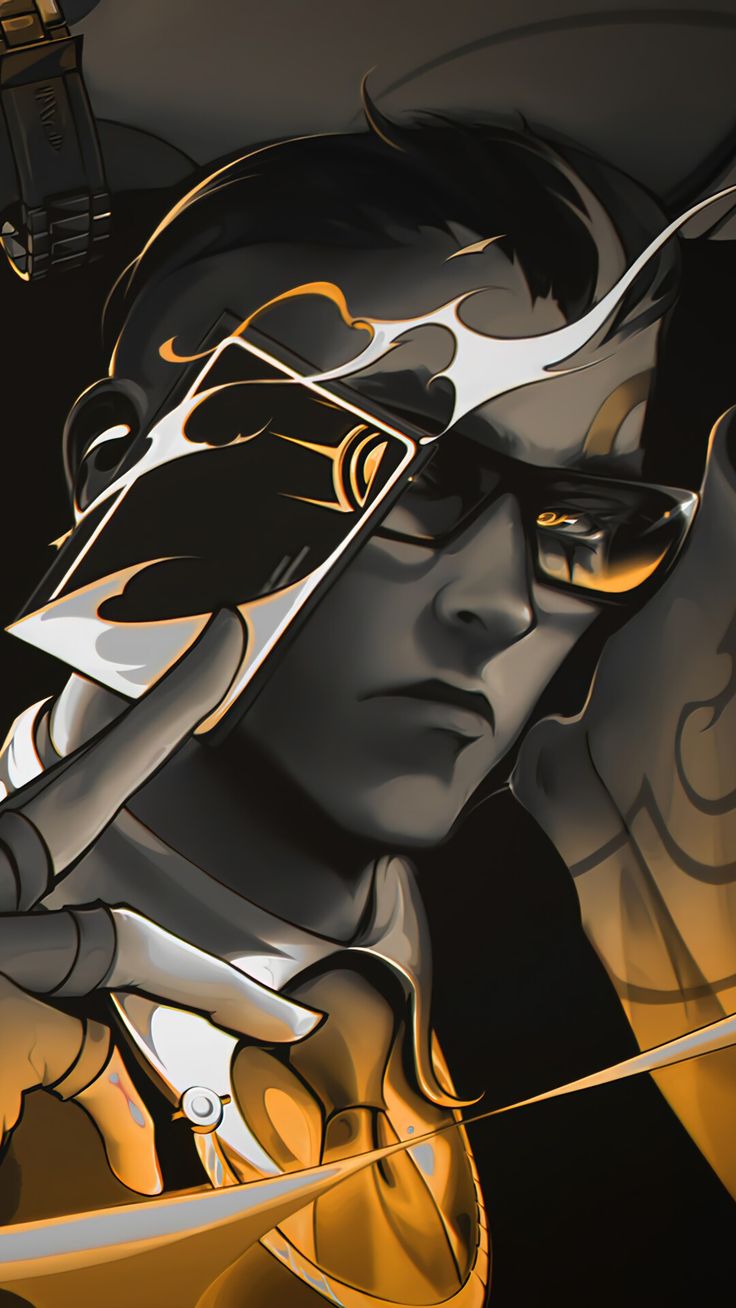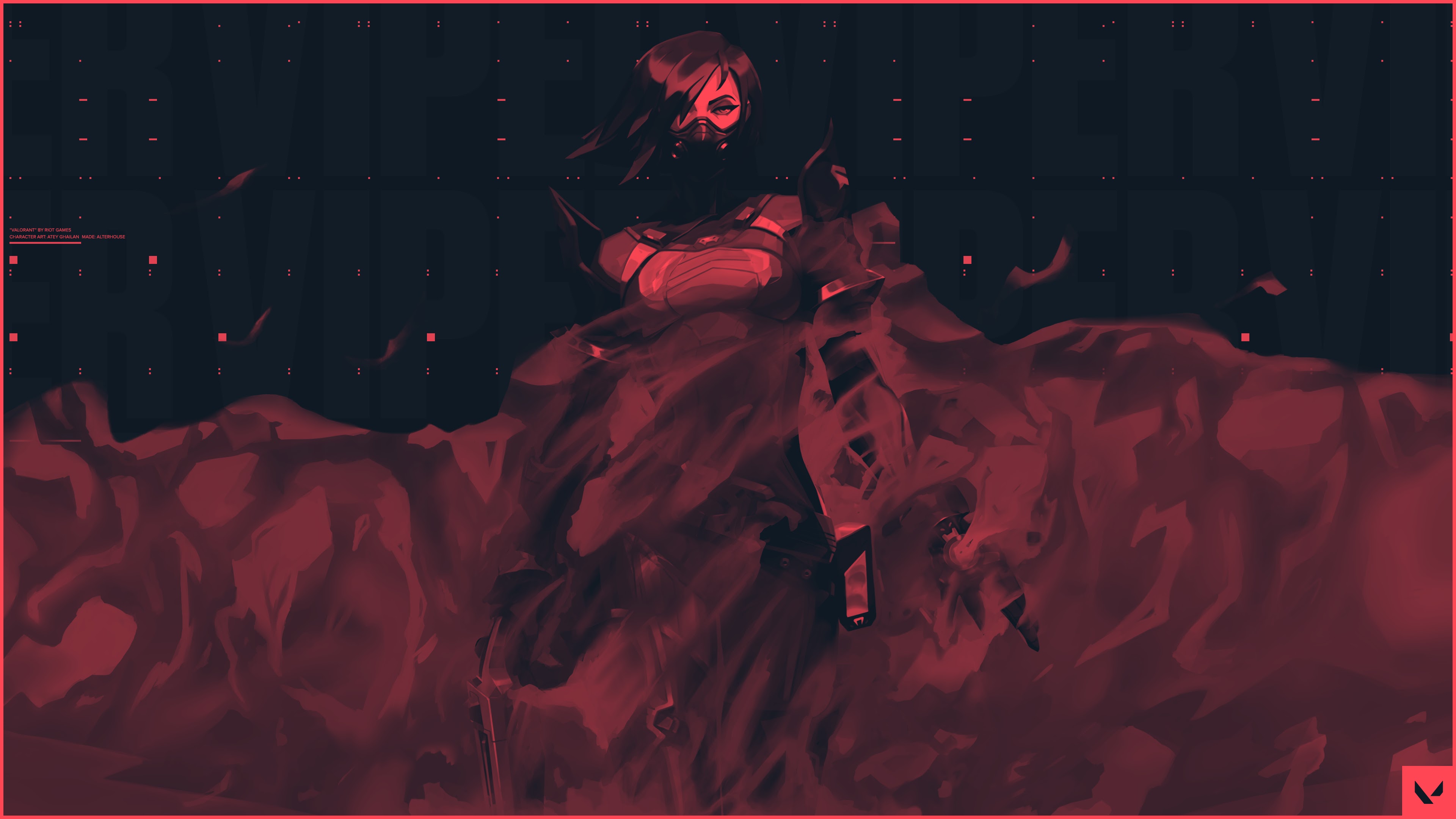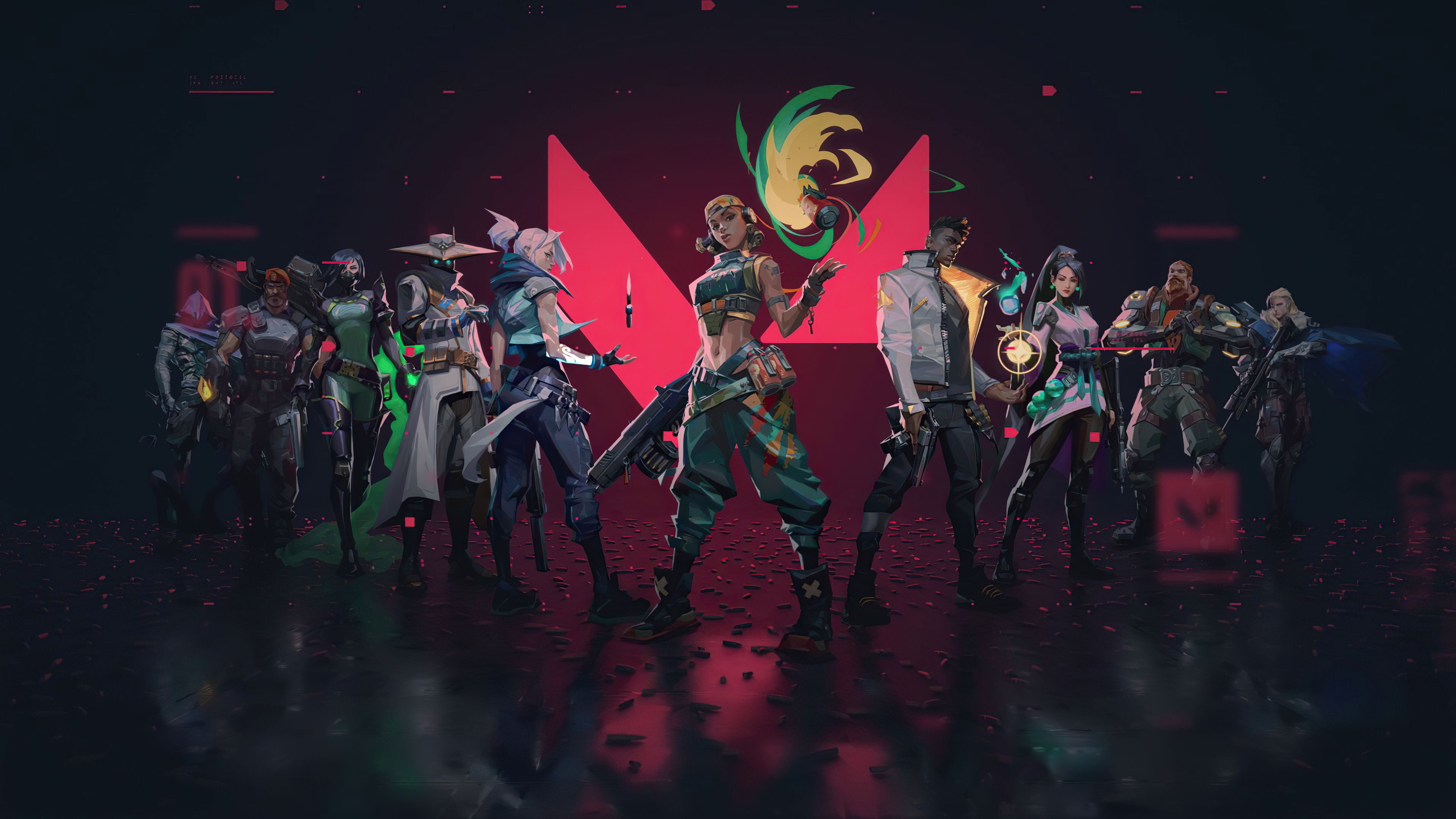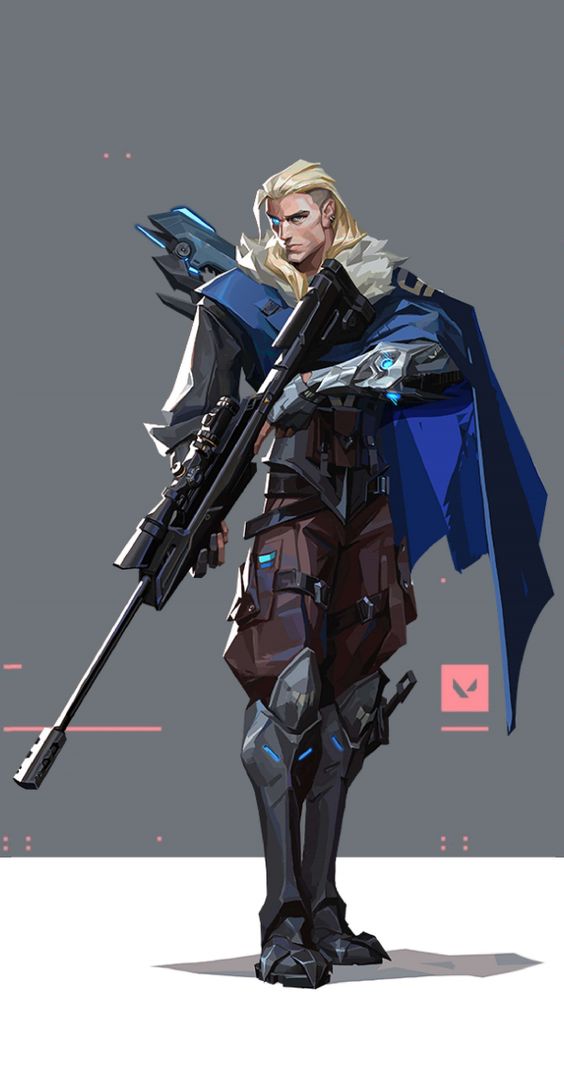Valorant has caught the collective mind of FPS gamers in an incredible amount of time. Riot's competitive shooter is only in beta, but it's already competing with the industry's top titles. Valorant benefits from coming from a large company, as well as a deviously clever cooperation with Twitch streamers to selectively offer out beta access. That massive marketing drive, though, would be meaningless if Valorant wasn't also quite good.
Valorant is Riot's best Counter-Strike attempt, but it's the way it changes Valve's blueprint that makes it great. Counter-terrorist gangs are replaced with a cast of colorful agents with skills that match their personalities. Agents quip at each other at the start of rounds and breach the fourth wall to proclaim they've eliminated the opposing team's "imposter" in Overwatch style (the enemy playing the same character). It has the same positive spirit as Overwatch, which makes every loss a bit more bearable.
The 5v5 games last up to 25 rounds, with each round lasting anywhere from 10 seconds to a few minutes. The attackers want to plant the bomb (known as the Spike in this game), and the defenders must defuse it or die trying. Over the years, other games have copied Counter-round-based Strike's bomb mode, but few have ever replicated the game's identical shooting style, map design, or weapon economics. Even in 2020, Counter-Strike holds out as a shooter where mechanical talent, strategic frugality, and profound mind games are all important.

Valorant tries to keep those fantastic qualities while also throwing in magical ice walls and drones. Traditional support items like smoke, flash, and fire grenades become entertaining skills with a variety of uses thanks to the deliberate dissociation from reality. Take, for example, Phoenix's Hot Hands, a molotov-style fireball that heals Phoenix while also burning adversaries, or Jett's Cloudburst, a fog grenade that she can guide through the air after throwing. It's not only entertaining to play, but it also inspires skill shots not available in Counter-Strike.
It's been particularly wonderful to watch Sova's recon arrow evolve into its own type of art. Practiced players are now landing absurd shots across the map that bank off three walls before landing in vital chokepoints, where they detect and mark foes. Valorant has a lot of flavor because to its abilities. Cypher, an intel analyst who can watch the map with his sticky camera, was my primary for the last two months of closed beta. Using my camera and Trapwires to target an adversary and wallbang them through a box is one of Rainbow Six Siege's coolest moments.
I admire Riot's efforts to provide value to the team beyond clicking on heads, but a few abilities clash with the game's devastating combat. Sage, Valorant's sole committed support, is the most obvious example. Her ability to heal allies (or herself), shut off choke points with her ice wall, slow adversaries, and revive teammates has proven to be a crucial aspect of well-rounded teams, even after a few nerfs in the open beta. It's obvious that she has too many good tools at once, but my major issue is her Resurrection ultimate's dominance. It's depressing and upsetting to lose a hard-fought round because Sage changed a tense 1v1 into a 1v2. Ultimates are supposed to have a lot of power, but Sage comes dangerously near to being a round decider. It's equally aggravating to lose a fight to Valorant's brand new agent, Reyna. Even if I leave her with 20 health, she can slurp up my soul like a spaghetti noodle and overheal to full health in no time. Riot wants to ensure that good aim always triumphs over skills, but I'm not sure how that works with an agent that starts every fight in perfect health.

It's difficult to strike a balance between Overwatch, where precision is secondary to a well-timed ult, and Counter-purist Strike's weapon jousting. Any variations in this scale are likely to alienate or anger players as Valorant adds additional agents over time. What's encouraging is Riot's proactive attitude toward implementing substantial reworks that move the meta forward. The speed is a welcome difference from years of playing Rainbow Six Siege, where balance adjustments are often delayed and fall short of addressing the meta's most pressing flaws. Of course, this acclaim will only be meaningful if Riot can maintain its current level of excellence in the months and years ahead.
Aim training
Valorant's shooting may be difficult for those who haven't spent a lot of time in Counter-Strike. I'm still working on remembering to remain still before shooting, but the practice area includes plenty of options for honing your aim and fine-tuning sensitivity. Exaggerated bullet tracers on Valorant make it simple to track bullets in mid-air and react to recoil on the move. Other fundamental CS aspects, like as weapon economy and the Buy Phase, appear to be under-explained. Valorant will likely entice newcomers to CS, because it lacks essential strategy skills such as save rounds, playing for picks, and bomb placement.
You might get a soft introduction if you're lucky enough to be partnered with friendly players. If you're partnered with jerks, which is a problem in this game as well as others, though Riot makes an effort, the 'advice' you get over voice chat won't necessarily seem helpful. Muting is simple, and a reporting tool is available. For that obnoxious teammate that makes callouts yet yells every time they die, you can set the individual volumes of teammates' microphones.

Riot collected binders of notes while playing CS:GO, as seen by Valorant's quality-of-life features. For CS:GO gamers, the redesigned Buy Phase is especially striking. You can easily return anything you've changed your mind about without incurring any financial penalties. Teammates can simply purchase weapons for each other without having to throw them through the air. Simple shortcuts might alert the team that you're saving. A ping system inspired by Apex Legends aids in contextualizing each map's complicated web of callouts. Players may tell how far away their footsteps are by looking at visual pulses on the minimap. I could go on, but the point is that Valorant is jam-packed with useful features that Valve should incorporate into CS:GO as soon as feasible.
The majority of Valorant's 16 guns are bland-looking Counter-Strike replicas—the M4 becomes the Phantom, the AK-47 becomes the Vandal, the AWP becomes the Operator, and so on—with a few unusual additions like the Shorty sidearm shotgun.
Unlike in CS:GO, every main has the option to aim-down-sights for a slight zoom and accuracy boost. This, combined with the random recoil sway introduced after the first few shots, contradicts CS:solid GO's recoil patterns, which can be refined with experience. It isn't merely different for the sake of being different. Maintaining rapid-fire as a viable technique up close while rewarding slower tap-firing at a distance makes shootouts interesting and emphasizes assault weapon adaptability. It's amazing to watch someone learn CS:predictable GO's patterns, but I like Valorant's emphasis on smart weapon positioning. Even if the skill ceiling is lowered significantly, we're still talking about a skyscraper.
Map talk
The map pool is the only aspect of Valorant that feels a little thin at launch. At the moment, there are four maps available. Although the selection is limited, I appreciate the variety of layout and style. Each map will include something "new and unique," according to Riot, including portals connecting the two sites in Bind, a third bomb site in Haven's mid, climbing ropes in Split, and one-way metal doors in Ascent (the new map for launch).
Valorant's map design, for the most part, succeeds in emulating Counter-well Strike's researched sightlines and chokepoints. Because you can't pick and choose which maps to queue for in matchmaking, it's critical that no maps are absolutely one-sided. Split's cords are insignificant, and Bind's portals can cause more trouble than they're worth. The community will take months to fully evaluate each map's merits and limitations, but I'm having a good time wherever I end up. Having a completely new map to learn has alleviated the tiredness I was experiencing during closed beta while playing the same three maps.
Riot probably doesn't want to overload novice players with too many maps. In Siege, which includes a rotating pool of 15 maps with complicated, multi-level architecture, this is a major issue. Starting slowly is a good idea, but Ascent will get old too. If each new season of Valorant is accompanied by a new location, map five may arrive in a matter of months.
Pay up
While Valorant's agents are all visually distinct, I can't say the same regarding the weaponry. Every weapon's default skin is the same dull mix of gray, black, and orange. It not only looks uninteresting, but it can also cause confusion in-game with weaponry that appear to be too identical from afar. Months later, I'm still picking up a Phantom off the ground only to discover it's a Spectre SMG. You'll probably have to dig deep into your wallet to snazz up your loadouts.
The $10, 50-tier battle pass includes a few sleek skins. Others will require outright purchase. Some of the skins are interesting, but I'm not sure I'd pay $15 to make my Vandal look like a car. Though I'm enticed by the beautiful skins that can be updated to change the reload animations and noises (a few of them sound like they're right out of Mass Effect, which is cool). Nothing sticks out as particularly cheap in comparison to other free-to-play games, but we're still talking about $70 skin packs. Whether you grade on a curve or not, that's a lot of cash. Thankfully, ignoring the store and just playing is simple.

Agent unlocking is a different story. Sage, Phoenix, Jett, Brimstone, and Sova are all available for free. The rest must be purchased individually for $10 or unlocked through Contracts (essentially a mini-battle pass for each agent). An early in-game Contract will immediately gain you two more agents, but the remaining four will take substantially longer. This fact's communication is a little deceptive. It's easy to believe you'll be unlocking everyone at the same time, only to run into a wall of agent contracts that require a lot more experience to complete. It could take a few weeks or months to complete the roster, depending on your commitment to completing daily challenges and generally playing a lot.
Of course, you can always bypass the contract by paying the $10. For a hero game, that's a lot of money. To put things into perspective, the most expensive League of Legends champions are roughly $8. New Rainbow Six Siege operators are $5 (though the game is $20), while new Apex Legends characters are $7.50. You receive tiny cosmetics like an account banner and "gun buddy" charms that dangle from your gun if you skip the agency contract, but it's still a bit pricey.
On guard
Despite how much I enjoy Valorant, I can't help but cringe when I see Vanguard, Riot's proprietary anti-cheat software that is required to play the game. Vanguard comes with a kernel-mode driver that starts up with your computer. That means it has abnormally high-level access to your PC's internals in order to disable cheat apps' drivers. You can disable it, but the next time you want to run Valorant, you'll have to restart your computer and allow it run. (Correction: An update last month unblocked Core Temp, as well as some common RGB and fan controllers, which were previously prohibited by Vanguard.)
For how much I'm loving Valorant, it's hard not to wince a little at Vanguard, Riot's proprietary anti-cheat software required to play the game. Vanguard includes a kernel-mode driver that runs as soon as your PC boots. That means it has unusually high-level access to your PC's innards for the purpose of blocking drivers that cheat programs employ. You can turn it off, but you'll have to restart your machine and let it run the next time you want to launch Valorant. (Correction: We previously stated that Vanguard blocks a program called Core Temp, but an update last month unblocked it, as well as some common RGB and fan controllers.)
Valorant is the Counter-Strike that I didn't realize I needed. Every round has an addictive dynamic to it, and abilities broaden the possibilities of teamwork for this type of FPS. I'm excited to see how new agents and maps keep things interesting in the coming years. Valorant is an excellent team game that you can play right now without investing a dollar, even if unlocking its full roster is a significant grind and cosmetics are expensive.









Post a Comment